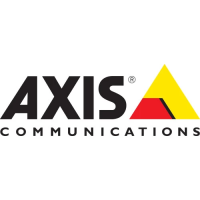USER MANUAL 13
Moisture in substances is an essential quality factor of technical and economical
importance.
Methods of determining moisture may be grouped in two main categories: absolute and
deductive.
Absolute methods are based on simple relations, e.g. weight decline during drying.
Thermogravimetric analysis used in AXIS moisture analyser is an example of this method.
Deductive (indirect) methods measure physical quantity related with moisture, e.g.
electromagnetic waves absorption, electrical conductance, acoustic wave speed. Some
of these methods, unlike thermogravimetric analysis, enable to determine water content.
Thermogravimetry - lat. thermo – heat, gravi – weight, metry – method
Thermogravimetric analysis – a process of determination of a substance mass decline
as a result of heat-up. The sample is weighed before and after heating-up, the difference
is calculated in relation to initial weight or final weight (dry mass).
Moisture in substances
Thermogravimetric analysis includes all ingredients evaporating from substances during
heating-up, which results in weight decrease.
In result of the above, determining of moisture content in substances is not equal water
content. Beside water, moisture consists of all other volatile matter: fats, alcohol, aromas,
organic dissolvent and other substances resultant as en effect of thermal decomposition.
Thermogravimetric analysis does not distinguish water from other volatile matters.
Infrared radiation drying is more effective than traditional methods (e.g. in an oven) as
the radiation deeply penetrates the substance, which shortens drying time.
11.1 Infrared radiation source
ATS/BTS series moisture analyser uses 2 halogen heaters (rated power 100W, l=78mm)
in serial connection as a radiation source. The heaters emit also visible radiation, which
does not affect drying process.
11.2 Infrared radiation drying description
Sample drying is a result of absorption of infrared radiation, which results in sample
temperature increase and evaporation of volatile matters.
Infrared radiation penetrates surface layers, the depth depends on penetrability of a
sample (different in various substances). Part of radiation is reflected by the sample
surface. Penetrated layers absorb the radiation and convert its energy into heat. Emitted
heat propagates inside the sample. Effectiveness of the propagation depends on thermal
conductivity of the sample. The better the conductivity, the faster drying process and
volatile matter evaporation. During drying process sample parameters change, its thermal
conductivity decreases so there is a risk of burning the sample. Some parameters may
be estimated “by sight”, e.g. smooth and light surfaces reflect radiation better. This must
be taken into account when setting drying parameters.
11.3 Drawing and preparation of a sample
As sample of given substance must be representative, drawing and preparing a sample
is very important process as it affects repeatability of measurements. The most common
method of homogenizing a sample is mixing. The other method is to draw few samples
from different but specific points in a substance and calculate an average value. Another

